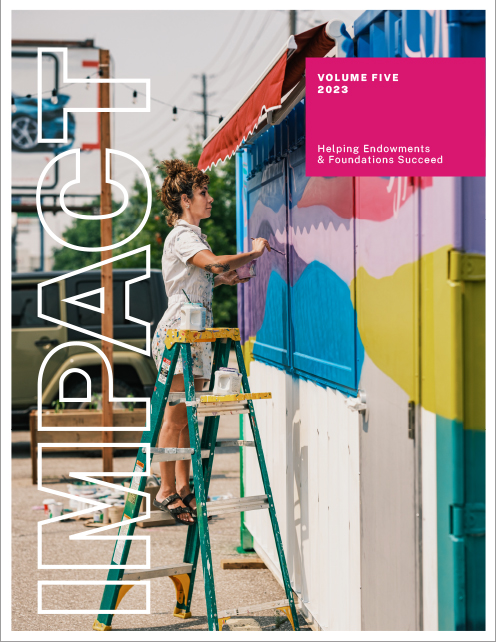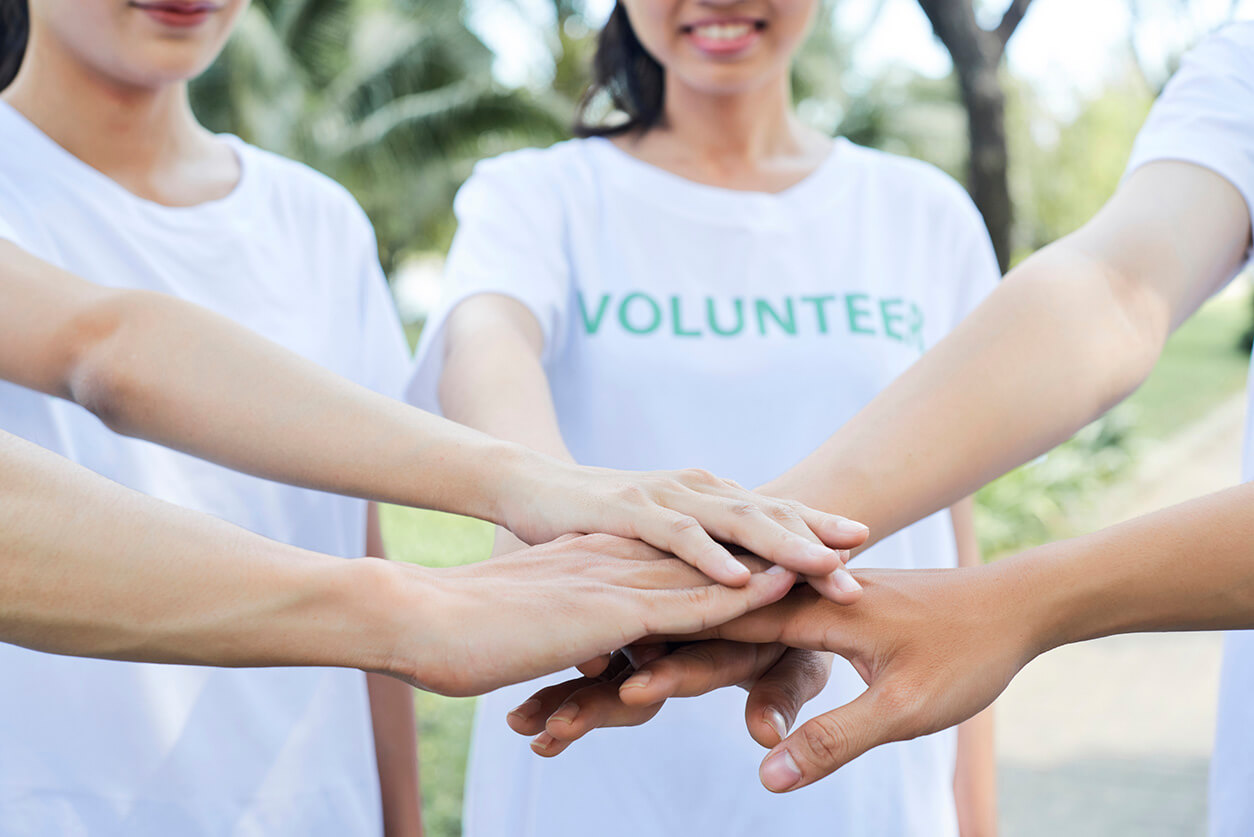Prior to joining WARM, Scott Marier, Executive Director, Westerville Area Resource Ministry, had a corporate career and spent time as a pastor. Scott’s prior experience played a critical role in his ability to transform the organization into what it is today. During his 18 years in the corporate world, he developed a skill set of operations, marketing, finance, and human resources. He then pivoted and spent the next 11 years as a pastor, where he learned the power of compassion, transformation, and the ability to change lives for the better. These dual competencies helped him to improve business operations while also utilizing fresh tactics to engage new donors.
With a dedicated mission, Westerville Area Resource Ministry (WARM) has become one of the Westerville community's most trusted non-profits thanks to their proactive and clearly-defined approach to identifying donors and cultivating relationships.
Now celebrating its 50th anniversary, WARM is a faith-based service organization whose mission is to provide food to local individuals living below the federal poverty line. We asked Scott Marier, Executive Director, if he would kindly share his experiences and tactics that they’ve used to enable their immense growth.
In our discussion, Scott shares the ways in which collaboration is essential to achieve success, especially when it comes to finding and retaining donors and advancing your organization’s mission.

Have you downloaded your copy of Impact?
Get new ideas, fresh inspiration, and more articles like this in our most recent edition of Impact, a publication for non‑profits.
Download nowWARM has seen exponential growth since you took on your role over a decade and a half ago, what skills or strategies did you utilize to achieve this? Do you have advice for other organizations that are looking to drive such growth?
We’ve been very fortunate in building a brand with a lot of equity and trust, and it’s attributable to the relationships we’ve developed. Fundraising is 95% relationship and 5% ask. If you know what donors' passions and interests are, and they match accordingly, then you achieve a high level of collaboration. You can help them become successful and that helps you become successful in relation to what you’re trying to accomplish.
There’s nobody guarding the well-being of this community more passionately than we are, so we try to leverage that. There’s plenty of poverty in other neighborhoods, but I don’t have to go looking for more until we satisfy what’s going on in ours. Our board is very focused on that, so that’s allowed us to stay disciplined. We’re very cautious about not entering into mission drift.
People will always have an opinion about what your organization should be doing, but if we try to stem homelessness and clothing or shelter and transportation needs, what happens is that your organization gets spread so thin that it’s difficult to sustain enough resources. Instead of keeping our mission broad, we narrowed our focus to say: We are best at providing nutritional services and high-quality food for those in need.
While other issues are closely tied to what we are doing, like providing employment assistance or counseling needs, we have developed trusting relationships with other organizations in our community so that we can stick to our mission. In building these relationships, we know that those we serve are going to be treated with dignity and respect, with as good of service as we’d provide (and yet we don’t have to). For example, we have one of the best counseling centers in the state, three blocks away, why would I get into the counseling business? It doesn’t make sense. It’s important to stick to our lane and do well with our core mission because an organization that is too broad can’t be as effective.
How do you appeal to different types of donors? Do you change your delivery approach based on who you are talking to?
You need to learn different languages to communicate with different people. I can’t just wear the hat of a Pastor. If I’m talking to a banker, I need to speak their language. Bankers understand a return on investment. They ask, “What’s the bottom line?”, “How much is it going to cost?”. So, I specifically let them know the impact their investment has in that regard.
Then there’s the engineers of the world. They don’t care how much it costs, but they want to know how it works. So, we discuss our programming, how it works, the research behind it, and the impact it has. Engineers make the world work, and that’s what makes sense to them.
The artists of the world don’t really care how much it costs or how the programming works, they want to see how lives are changed. They want to see the impact on the community as a whole. I’ve learned these different languages throughout my life, and I try to use them to connect with people who are different than myself. I’m not a banker, I’m not an engineer, I’m not an artist, but I need these folks to all work together. It’s my job to understand what motivates them.
What are the most important things you need to learn about your donor before making an ask?
Whether your donors want to contribute time or money, it doesn’t matter. I developed a different mindset to how WARM pursues fundraising. It’s not about what we need or what the needs of the ministry are. It’s all about what our donors want to pursue, and what their interests and passions are. If we align with that, miracles will happen, and the tide goes up for the whole community.
What types of relationships have you built in the community to maximize your success? How do you build and then maintain them over the long run?
It’s important to continually network. If you talk to a potential donor and they don’t have what you need, ask them if they know of anybody that would. Ask to be introduced to that person. If you can get two names or referrals, your pipeline never goes empty. You can’t plant today and harvest tomorrow, so you should be planting all the time, so that sooner or later you can harvest.
The key to networking is developing relationships with various areas of the community. If there is a community activity going on, we show up. I started going to City Council meetings to learn what was going on in the community and soon, I had a presence there. We have been members of the [Westerville Area] Chamber since before I started at WARM, but no one went to meetings, so I started going. I also joined Rotary because we have shared values, and it’s a good network of leaders in the community that help make this town function. My strategy was to make connections with people. After a while, people started accepting my phone calls. Today, our long-established relationships have helped us tremendously because of the resources they represent and the network of relationships they have.
It's important to capitalize on new relationships as well. When somebody new joins an organization or is new to the area, I’m quick to call them and say, “Welcome to Westerville. Once you get settled, I’d love to meet you. Come on over and see how WARM operates and how we are working towards improving the well-being of the community.” This helps to start developing some chemistry with the donor in a very authentic way.
How do you determine what to ask specific donors for? Can you give some examples of donor gifts that are better than money?
I constantly evaluate what is on our wish list and what will help advance our mission. I ask questions like, “How can we make our building cleaner?”, “How can we upgrade equipment?”, “How can we upgrade the environment we work in?” In doing this, I became what I call a ‘horse trader.’ I look at the resources we need and talk to donors about how they can specifically help us improve. For example, if I know that a business is moving to a new location or upgrading their office, I’ll ask to look at their old furniture. If it’s better than what we currently have, we’ll use it. If it’s not, we’ll relocate it and give it to someone else. It’s important to think about trading up, just like looking for the next customer. We’re always looking for new investors, donors, and volunteers that have resources that we need. When we find them, we stress how they can help us improve.
This strategy has led us to obtain larger facilities with better equipment including a new phone system, computers, and copy machines. It also helped us receive things from trucks, forklifts, and warehouse racking to coolers and freezers.
On the flip side, if I have developed a relationship with an organization that needs something, I ask them to send me a list. If I don’t have what they need, I’ll inevitably run across someone who will have that resource. These connections are such a simple form of collaboration, but we can all achieve so much more together.
How important is volunteering when it comes to donor retention for WARM?
From a labor standpoint, I could never raise enough money to pay for all the manpower that it takes to run a 40,000 square feet facility. A volunteer is as much of a donor as a financial donor because they’re giving something very valuable – their time. If I can get them to come volunteer, their heart comes with them. If we can touch their heart, they are more likely to make a financial donation.
We pay a lot of attention to the amount of time a volunteer should work, and carefully evaluate the environment they work in. Our focus is spent on loving, feeding, and caring for volunteers, because we cannot run this place without them. Last year, we had over 25,000 hours of volunteer time donated. Before COVID, we were up to 36,000 hours. When we invite volunteers in, WARM’s mission becomes their mission. It becomes their passion.
We just finished an organizational assessment where we surveyed 30 to 50 of our regular volunteers. In six different areas, our satisfaction level was 9.8 out of a 10-point scale. It’s unbelievable. Kudos to our volunteer manager and our operational people who love, care, and feed those people because it clearly has an impact. We have an abundance of volunteers, which continues to grow.
Time has become as valuable to people as money in some cases. If you’re not respectful of that and give volunteers a great experience in the time they’re donating, they’ll never give it to you again, and they’ll probably tell their friends.
Is there a single most important thing you communicate about WARM’s mission to align so many different forces in the Westerville community?
Part of the message that we continually communicate to people is that simply helping others is a good thing to do. We then follow that by saying helping others is the right thing to do, and close by saying helping others is worth doing and it’s worth doing well.
Together, we can really make a difference. We can’t do it alone. Donors can’t do it alone. When we collaborate, we work together for the benefit of others, and we can truly have an impact that’s measurable, that’s meaningful, that’s important, and that’s something that we can really be proud of. If we think about how we can help others achieve what they’re called to do and what they’re gifted to do, the residual benefits are more than we could ever bargain for.



